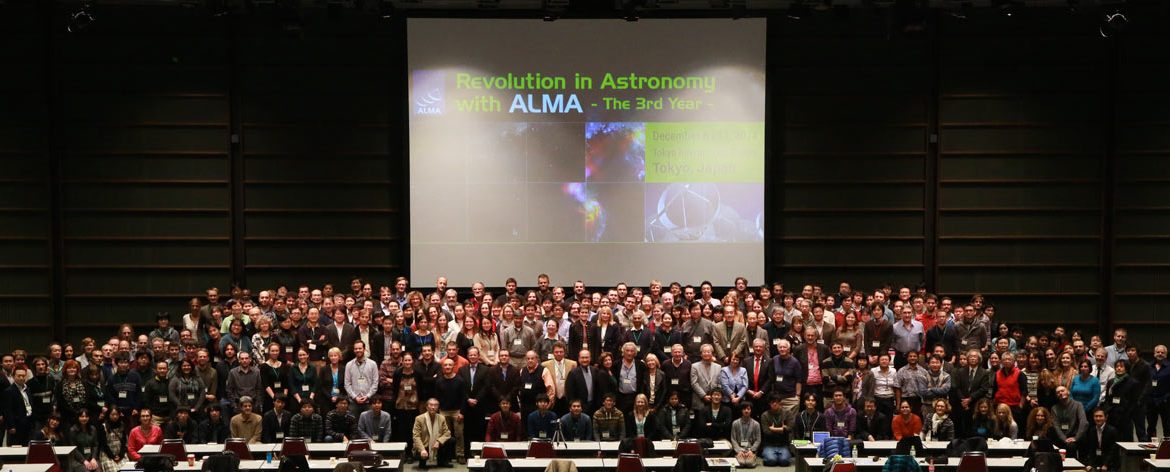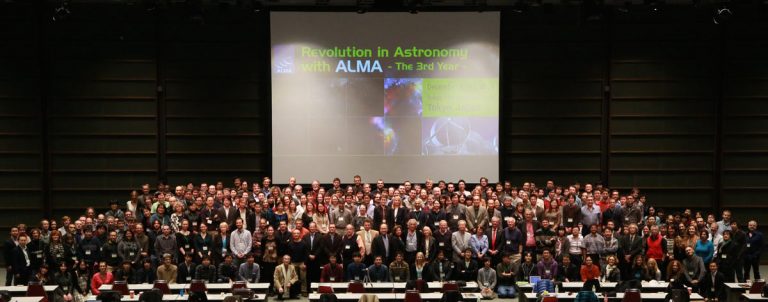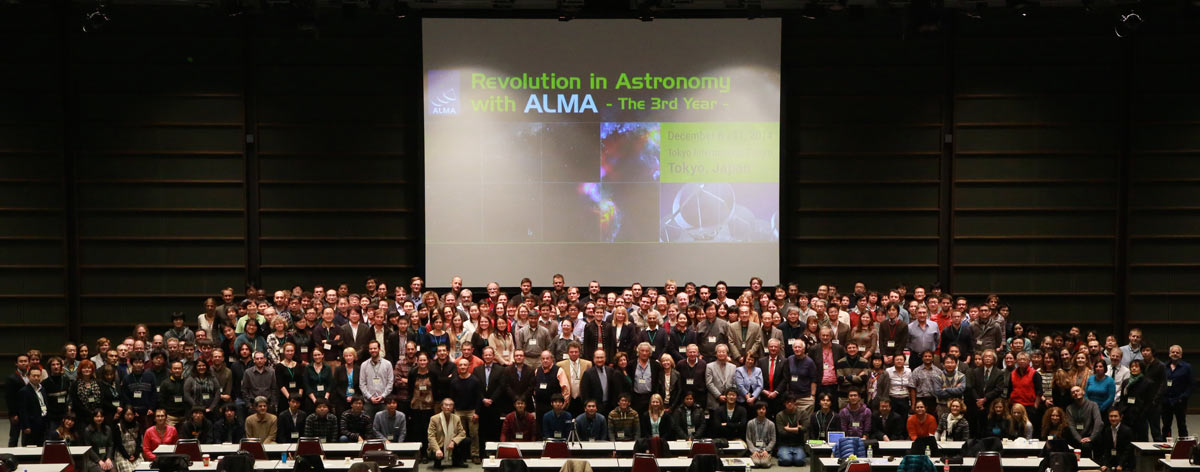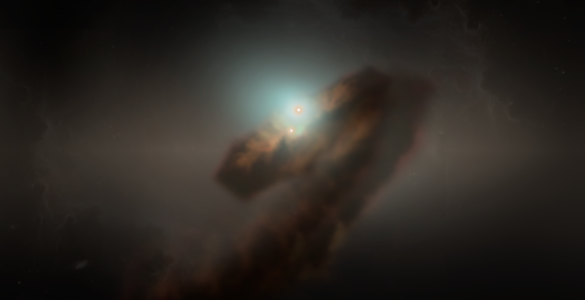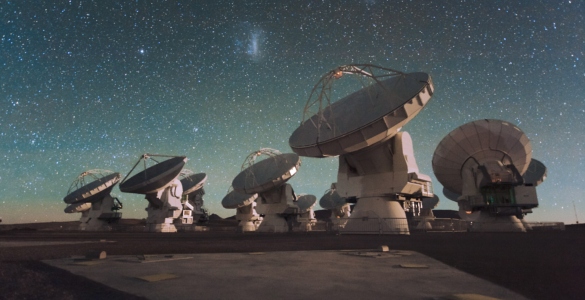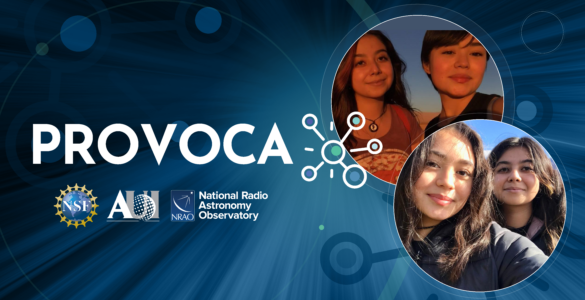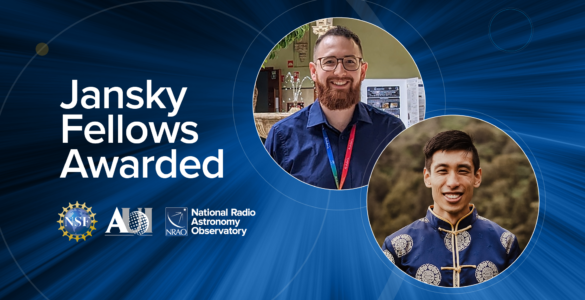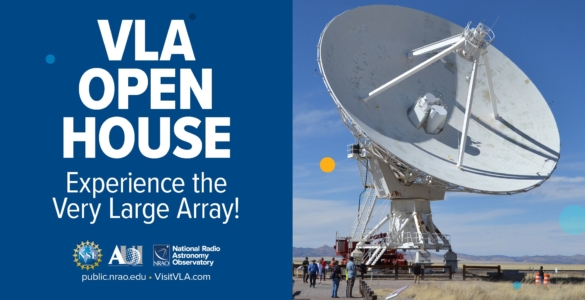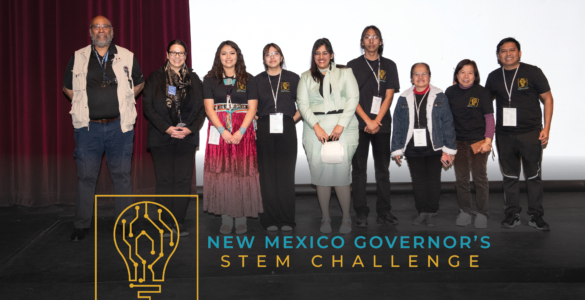Astronomers from around the world met in Japan to discuss the latest scientific results from the Atacama Large Millimeter/submillimeter Array (ALMA). ALMA began Early Science operations in late September 2011 and approximately 170 papers based on its findings have been published in refereed journals since that time.
“This conference has confirmed that ALMA has started a revolution in astronomy,” said Ken Tatematsu, chair of the Scientific Organizing Committee. “With unprecedented spatial resolution and sensitivity, ALMA is producing many breathtaking results as how galaxies formed after the Big Bang, how planets form from disks around protostars, and what kind of prebiotic molecules exist in the Universe,” he added.
From December 8 to 11, around 300 astronomers from different regions met in Tokyo for the “Revolution in Astronomy with ALMA – The 3rd Year” conference sponsored by ALMA partners — the National Radio Astronomy Observatory, the European Southern Observatory, and the National Astronomical Observatory of Japan — as well as the Joint ALMA Observatory.
The conference covered all of the ALMA science topics, from observations of the Solar System, formation of stars and planets, galaxies and stellar evolution to understanding the astrochemistry of the Universe. Presentations, posters and discussions focused on the data being collected by ALMA and the detailed images it has provided.
“We are witnessing many transformational scientific results thanks to this new instrument,” said ALMA Director Pierre Cox. “With the completion of construction last September, ALMA is now in full operation, delivering many wonderful results and making a dream come true.”
ALMA began its Early Science observations in September 2011 with just a quarter of its capability, or about 16 antennas. Since then, ALMA has nearly tripled the number of antennas (45 for the current cycle) and quadrupled the number of hours available for the science community (to 2,000 hours). This has resulted in a total of 3,505 observation proposals being granted by ALMA since the beginning of the Early Science.
ALMA recently finished its Long Baseline Campaign, which tested the array in the most extended configuration yet (antennas 15 kilometers apart), boosting the ability of the telescope to capture fine detail and allowing astronomers to uncover much more information about objects observed in the Universe. As a result of these developments ALMA has recently published the most detailed image obtained of the disc structure around HL Tau, a million-year-old, Sun-like star. This image was featured in the media around the world and shared during this conference.
“We are pleased to host so many astronomers in central Tokyo from all around the world,” said Daisuke Iono, chair of the Local Organization Committee. “The participants are enjoying the latest ALMA results, Japanese cuisine and the local culture.”


